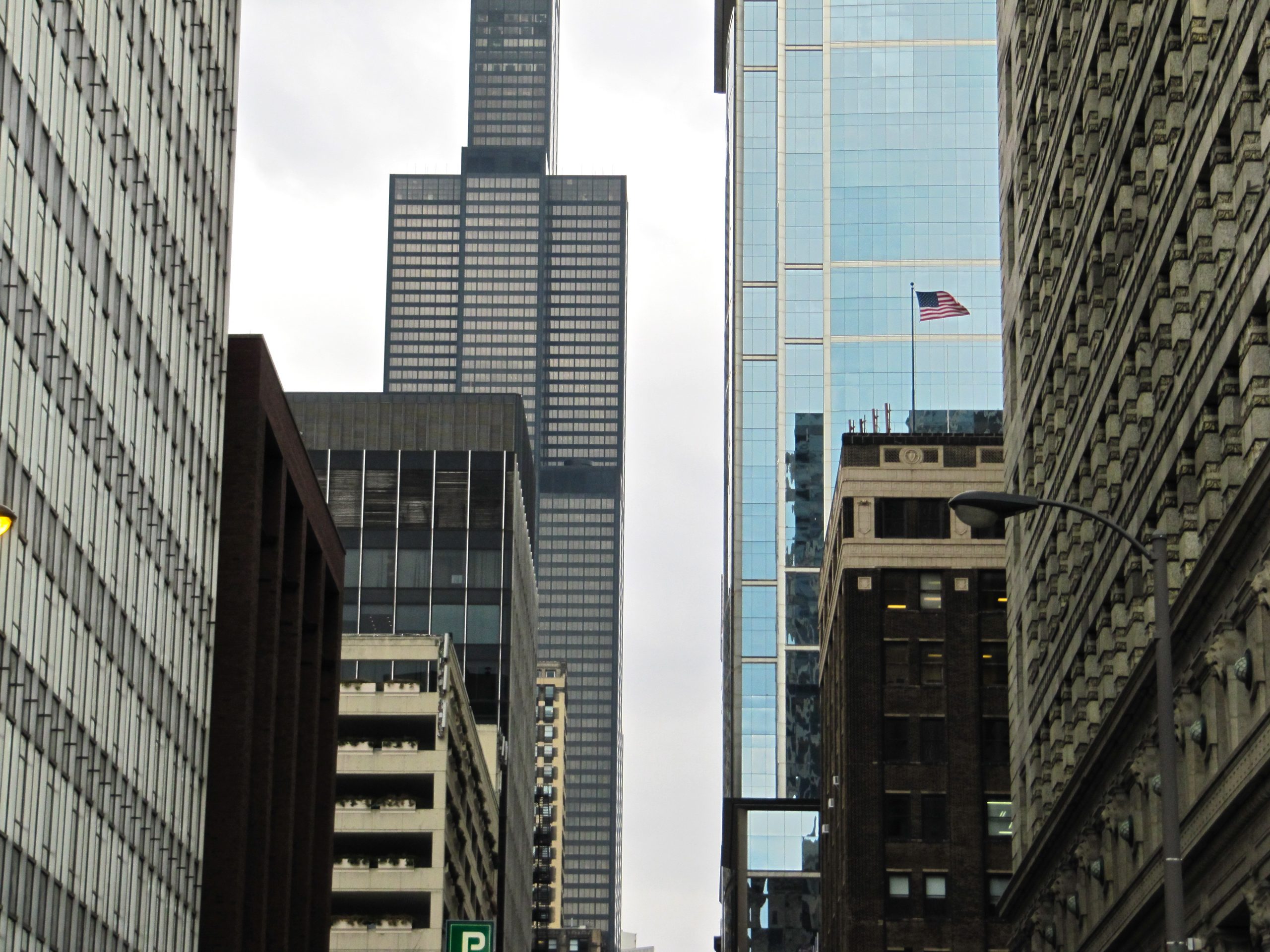Although most of them are gone, we’ve all heard of Chicago’s steel mills and we know the material shapes our modernist buildings. It has become a symbol of strength and endurance, and even inspired poetry, like “Smoke and Steel” by Carl Sandburg. As one of the world hubs for the industry, steel is iconic for Chicago. Chicago steel history is an essential element of our city’s great history and architecture, and that makes it pretty sexy! And of course, reading “sexy” in the title made you click, right? “Chicago Steel History.” We delve into a lot of this, though perhaps without calling it sexy, on our Chicago walking tours.
Why Here?
To start, the Great Lakes were rich in iron ore deposits. With steel being an alloy of iron and carbon, the steel industry erupted here. Chicago had this great geographical advantage of proximity to the source. The burgeoning industry appeared in Chicago, Joliet and North Chicago in the 1800s. In 1901, New York financial mogul JP Morgan organized the largest corporation on the planet, U.S. Steel. A lot of this steel went towards making farm equipment, railroads, bridges, and most importantly to this blog post – buildings. He may have been in New York, but new that Chicago was an integral piece in the grand plan.
Early Steel-Frame Skyscrapers
The first steel-framed building was William LeBaron Jenney’s Home Insurance Building. Many argue that the building, completed in 1885, was the world’s first skyscraper. The frame was made of steel instead of cast iron. Some people still debate the legitimacy of its “steel frame” since it also had a thick brick and stone exterior. It was torn down and replaced by another steel behemoth, the very Art Deco Bank of America Building at 135 S. LaSalle St.
The Reliance Building on State Street also blazed trails in Chicago’s steel history. Multiple architects of the firm Burnham and Root designed in 1890. At this point, the use of steel for tall buildings was still in its infancy. A visit to the Reliance Building gives you a rare example of an early steel-frame skyscraper that is still around. You can easily see the columns of its steel-framed supports that surround its wide plate glass windows. Start looking at the steel and you’ll begin to see how the material dictated the form of this structure.
An Engineering Revolution
The steel frame revolutionized buildings. This type of construction allowed for more space because of less need for clunky walls and the ability to have larger windows meant greater natural light and ventilation. Back then the lighting technology was not very advanced and bulbs let off a lot of heat during the pre-air-conditioning era. And perhaps most importantly the strength of the steel frame encouraged architects to build taller, such as to 15 stories. Masonry buildings generally cannot stretch higher than 10 stories or so.
But let’s not get ahead of ourselves! Ludwig Mies van der Rohe came to town in the 1930s and brought with him his designs for modernist architecture. He wanted to get rid of fluffy ornamentation and other unnecessary details to essentially spare down buildings to their most basic elements. For example, the vertical steel I-beams of his 860-880 Lake Shore Drive towers run up and down the outside of the building and expose the steel structure to the world. In the past, that steel would have been covered in brick or tiles.
Steel at the Core of Modernism
The Inland Steel Building cannot be ignored in Chicago’s steel history in architecture. This elegant skyscraper used steel like an exoskeleton, with inside space that has no interruptions of walls, columns, or even elevator shafts because the steel columns on the exterior are the support for the structure. Additionally, the light at various times of the day illuminate the brushed stainless steel cladding beautifully. As a tour guide on our Loop Interior Architecture Tour, I love talking about the significance of this building, and how it served as a literal advertisement for the Inland Steel Corporation.

Fazlur Rahman Khan engineered the tube structural system and helped it take various forms with his giant skyscrapers, such as the Willis Tower and John Hancock building. Without the strength of steel, most of these forms would be impossible. The sky is still practically the limit in steel frame buildings in regards to height, especially with Khan’s designs.

Chicago Steel history is not just history though. If you bike or drive by A. Finkl & Sons Co., on Cortland St. just east of the North Branch of the Chicago River, you can still peek at the process of steel forging. And architects who continue to innovate with the material, such as Adrian Smith + Gordon Gill Architects. Their Solar EV Deck has continued the story of Chicago steel history. This super green, solar-powered structure located on Northerly Island charges electric/hybrid vehicles, shades them, and on top of that can collect rainwater for irrigation. Without steel, the structure could not have best supported the incredibly heavy photovoltaic equipment. And oh yes, strong is sexy.
— Amanda Scotese, Chicago Detours Executive Director












